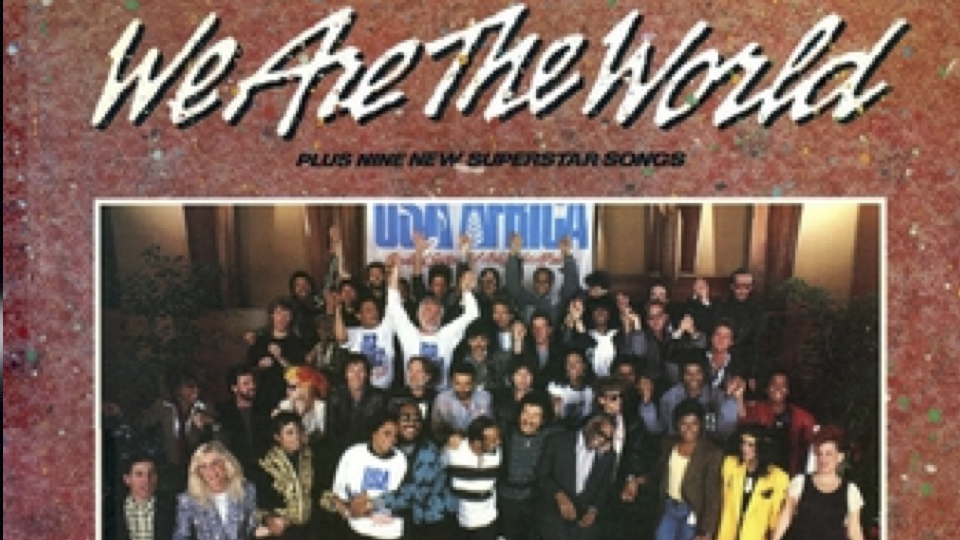I remember my mother telling me about a once-in-a-lifetime experience for music lovers. Back in the 80s, she was told by her brother about this incredible song performed by a huge list of big names.
“It can’t be”, she shouted. I mean, how could you put together Billy Joel, Stevie Wonder, Bruce Springsteen among many, many others for a single project?
Of course, that song did exist. “We Are The World,” written by Michael Jackson and Lionel Ritchie. And while not the first charity single, it is perhaps the one to measure all others against. It wasn’t only big in terms of the number of stars, but also in how big the stars were: a balance between music legends and then-current hot names and while not exactly a critical darling (the reception was, at best, mixed, some even comparing it to a commercial jingle), it was a huge commercial success. It was the best-selling single of 1985 and sold 20 million copies; no less importantly, it raised more than $60 million in charity relief.
And yet, it wouldn’t take long for the world to take a second look at this kind of campaign. Yes, good intentions do matter, but even as early as a season 3 episode of The Simpsons episode, the entire concept was already being spoofed.
Was it that 80s idealism just couldn’t survive the 90s nihilism? Is there something deeper?
Perhaps we could take a look at the impact of the song itself. It can’t be denied its big commercial success, and when you have success in your hands, it’s not strange to start seeing imitators. Technically, the first big charity single was “Do They Know It’s Christmas” by Band Aid, in December 1984. However, I’d argue that it was We Are The World that truly popularized the concept.
After all, if the UK and the US of A could pull this off, why not the True North?
In May of 1985, just a couple of months after Jackson’s and Ritchie’s composition, “Tears Are Not Enough” was released by a collective of Canadian stars called Northern Lights. It included some celebrities you’d expect, like Bryan Adams and Anne Murray, and some that aren’t the first ones to pop into your mind like comedians John Candy and Catherine O’Hara.
And that wasn’t the only “spin-off”: we had a Spanish charity single, “Cantaré, Cantarás”, with a supergroup of Latino artists. “Éthiope”, a French charity single. “Les Yeux de la faim”, the French Canadian answer, and no less important, “Stars by Hear N’ Aids”, the Heavy Metal contribution to the trend, with people like Ronnie James Dio, Rob Halford from Judas Priest, and Ted Nugent.
Some of these songs had better reception than others. One of the main problems is easy to see now: oversaturation. There were a lot of these charity-themed songs in a very short amount of time. And while music has billions of love songs and no one bats an eye, charity singles are supposed to be big “events.” The initial broadcast of the video for “We Are The World” was must-see TV. But when the event seems to happen so frequently, then it stops feeling big.
The quality of the names also counts. In 1991, during Desert Storm, the charity single “Voices That Care” was released to help boost the morale of troops and to help the International Red Cross. It had good intentions, but the stars involved were nowhere near the caliber of previous attempts: Peter Cetera, Paul Anka, and Celine Dion are all big names…but not exactly the same caliber as the King of Pop in the mid-’80s.
Even in the “coolness” department, there’s no contest. As cheesy as previous attempts were, there was this suave factor to them. “Do They Know It’s Christmas” had George Michael and Phil Collins. “We Are The World” had Tina Turner and Bob Dylan. “Sun City” had Joey Ramone and Run DMC. “Voices That Care” had … a sax solo by Kenny G.
We’ve had noble attempts in subsequent years, like a cover of Marvin Gaye’s “What’s Going On” in 2001, a cover of Eric Clapton’s “Tears In Heaven” in 2005, and of course, the 25th-anniversary version of “We Are The World,” all with good intentions (relief to the victims of 9/11, the Indonesian Tsunami, and the 2010 Haiti Earthquake, respectively), but by this point, the charity single devolved into a kitschy curiosity.
So, are these songs done for good? It’s hard to see them as the big events they originally were sold as. Opinions vary about “We Are The World,” but it was a cultural landmark. Almost every participant is still revered or respected to some degree, I’d even argue it’s even less dated than the 2010 version, and that right combination of cause, stars, song, and moment just can’t be replicated.
-Anthony Arrieta
Photo: Fair use image of “We Are The World”





And from those those golden days of yore when giants (of music) roamed the earth, there was The Concert for Bangladesh. Just saying . . . 😊
And of course the Band Aid project ended up creating Live Aid which also had a sequel Live 8 several years later.